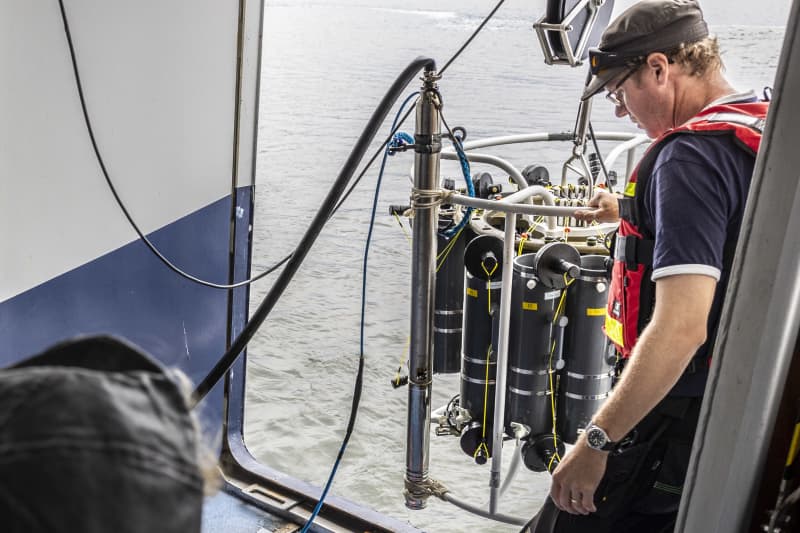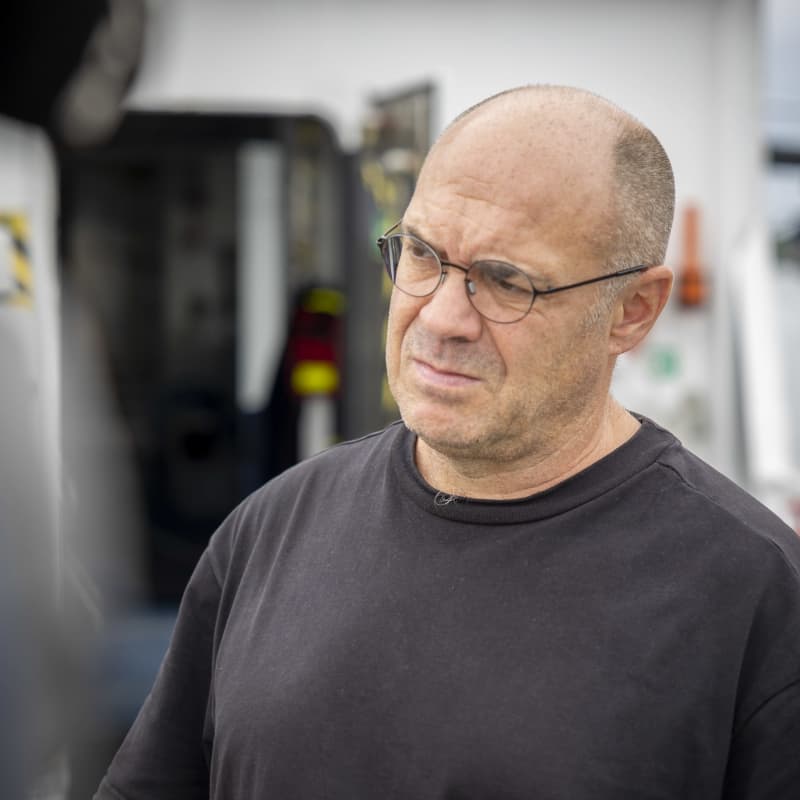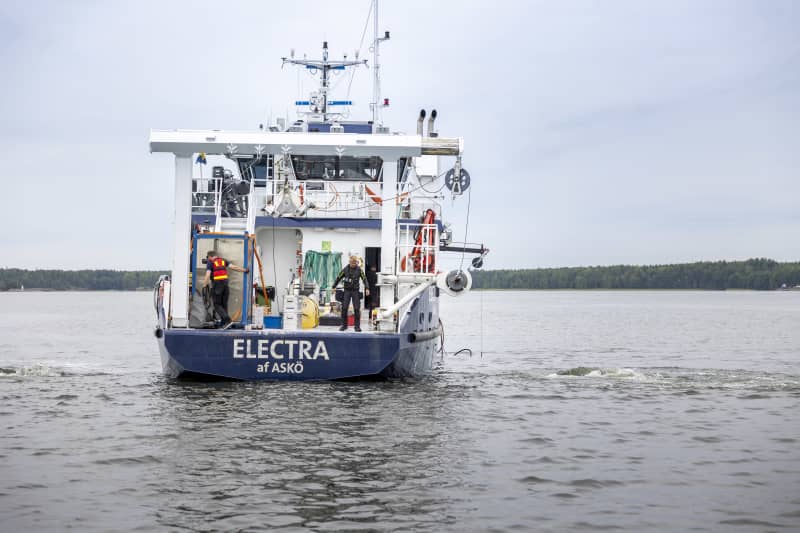Exceptionally high temperatures have been recorded along the coasts of the Baltic Sea, making it difficult to improve the state of the sea.
This and previous summers, even surprisingly high levels of strongly warming gas emissions have been measured in shallow waters off the Baltic Sea coast.
According to the researchers, emissions increase sharply as the water warms. High concentrations have been measured in August, for example, when coastal waters were warm for the time.
It is about intensifying climate change and increasing heat waves that accelerate chemical and biological processes in the ocean.
The high methane concentrations in particular are a new example of the historically rapid warming of the climate at the latitudes of Finland and its effects in the shallow and sensitive Baltic Sea.
According to the researchers, the increase in temperature makes it difficult to improve the state of the sea and the possibilities of curbing climate change.
Coastal heat spikes cause big changes
The detection of emissions in itself does not surprise researchers. Something similar has been observed in connection with warming, for example in the melting low coastal areas of Siberia. Just like the coast of the Baltic Sea, a lot of organic soil flows from the continent to the shores of the Arctic Ocean, which, when it dies, causes a lack of oxygen at the bottom and releases methane.
High temperatures, when the water warms even deeper to almost 30 degrees, are used to being seen in tropical seas. Although this year, temperatures of 30 degrees have also been measured in the Mediterranean Sea, which is more than ten times deeper, during a long period of heat.

Both in the Mediterranean and the Baltic Sea, the heat spikes that are becoming more frequent and intensifying are messing up the fauna and flora. According to research, the warming and the oxygen deficit it causes favor, for example, annual species of algae.
These, in turn, lead to a vicious circle where the algae situation worsens and methane emissions increase. Annual green algae form an algal mass and, for example, suffocate other life on the bottom when they die.
– The probability that the sea is becoming a source is constantly increasing with the disturbance of the sea area, says Norkko about the growing risks of climate emissions.
Eutrophicated soils among the worst sources of emissions
The ongoing research project of the University of Helsinki and the University of Stockholm got its start in a way from the high temperatures and methane readings of 2018. Temperatures rose to tropical readings in some places, down to the deep bottoms.
The heat of 2018 was reportedly too much for the blue mussel, which is important for monitoring the sea state, and for another key species, the sea urchin. According to monitoring data from the University of Helsinki’s Tvärminne research station, the mussel population, at least in the shallow waters in front of the research station, was disturbed and seemed to be declining.
Even the key species are not monitored so regularly in Tvärminne, however, that the researchers could provide more detailed information about the wider effects of the heat spike on the key and other species.
However, its researchers know that the highest methane concentrations are released from places where the bottoms are in poor condition and eutrophication is the worst.
During the long warm period of 2018, methane amounts in the Tammisaari and Stockholm archipelagos corresponded to concentrations that are produced, for example, from rice fields in Asia or melting permafrost in Siberia. Rice cultivation is one of the biggest sources of methane in agriculture.
Researchers are currently investigating in more detail, among other things, how methane is released from deep in the sea to increase the already highest concentrations in the atmosphere in the history of measurements. Methane can overtake oxygen on the way to the surface.
During the research project, an assessment will also be made of how much methane is released from the poorly maintained bottoms of the entire Baltic Sea and whether its release can be prevented or slowed down.

Humborg says that currently most scientists think that the Baltic Sea is carbon neutral. Climate emissions and sinks are then the same. Along with forests, the world’s oceans are important carbon sinks, and they have so far absorbed most of the carbon dioxide that causes overheating.
The algae problem brought the carbon problem
Without the seas, the climate would have warmed more than it is now. The importance of the seas in connection with climate change has still mainly been studied in the deeper seas. Even for deeper sea areas, scientists do not know exactly how much methane will eventually be released from the world’s oceans.
Emissions of methane, as well as another powerful greenhouse gas, nitrogen dioxide gas, are considered to be inherent in the seas.
According to Alf Norko, at least the methane emissions on the Baltic Sea coast are mainly influenced by nutrients and other biological matter generated from agriculture. Nutrients have increased algal blooms. In addition to organic matter accumulated on land, dead algae growths cause local methane and carbon dioxide emissions in the sea.
According to several researchers, excessive amounts of nutrients in the Baltic Sea have led to a so-called back lock and a long vicious circle due to nutrients coming from the deep and dead bottom of the sea. Climate change brings a new ring to the previous nutrient problems, when the sea warms and the rains after the growing season increase nutrient runoff from the fields.
– Algal blooms have increased a lot due to eutrophication. Because of this, we have a carbon problem (methane emissions) in coastal areas, Norkko says about the observations.
With the researchers’ equipment, it is possible to see the age of methane with carbon dating. They show, for example, that in addition to local algal blooms off Tammisaari, the concentrations are affected, for example, by emissions from a local paper factory more than 50 kilometers away decades ago.
In order to study shallow sea waters, equipment has been installed in connection with the Tvärminne research station of the University of Helsinki, among other things, which monitors carbon changes in real time in the sea and air. The research set is rare in the world and something similar has only been done in forests before.
More reduction of algae-feeding nutrients needed
Researchers at the universities of Helsinki and Stockholm already know that the state of the seabed is of decisive importance for climate emissions.
Warm and unhealthy bottoms seem to increase emissions and even significantly reduce the Baltic Sea’s ability to sequester excess carbon.
Professor Humborg believes that the fastest way to improve the situation is if the nutrients that cause eutrophication can be further reduced. According to the Baltic Sea Center’s models, these nutrients escaping from the fields, in particular, must be reduced because warming does not worsen the current situation.
– The Baltic Sea is in bad shape, but the state of the coast has already been improved. If, for example, we make seagrass meadows, which are important for carbon sequestration, grow, carbon sequestration can be clearly improved, says Humborg.
According to Humborgh, some studies have found that the carbon sequestration capacity of coastal waters could be greater than that of forests in Finland or Sweden. According to Humborgh, the sea could bind up to ten tons of carbon per hectare under good conditions. The sequestration capacity also varies in forests, but according to estimates, one hectare of Finnish trees sequesters an average of one ton of carbon per year.

Seagrass meadows can usually live for tens of years and bind carbon well in the Baltic Sea. However, according to studies, large differences have been observed in the growth and carbon sequestration capacity of seagrass meadows. They are influenced by, among other things, the salinity of the area and the structure of the bottoms.
As with the success of seagrass meadows and carbon sequestration, it is also challenging to make more general estimates of the Baltic Sea’s methane emissions due to large diurnal and seasonal variations.
In the future, the results could be used, for example, in Baltic Sea conservation work and climate change mitigation.

